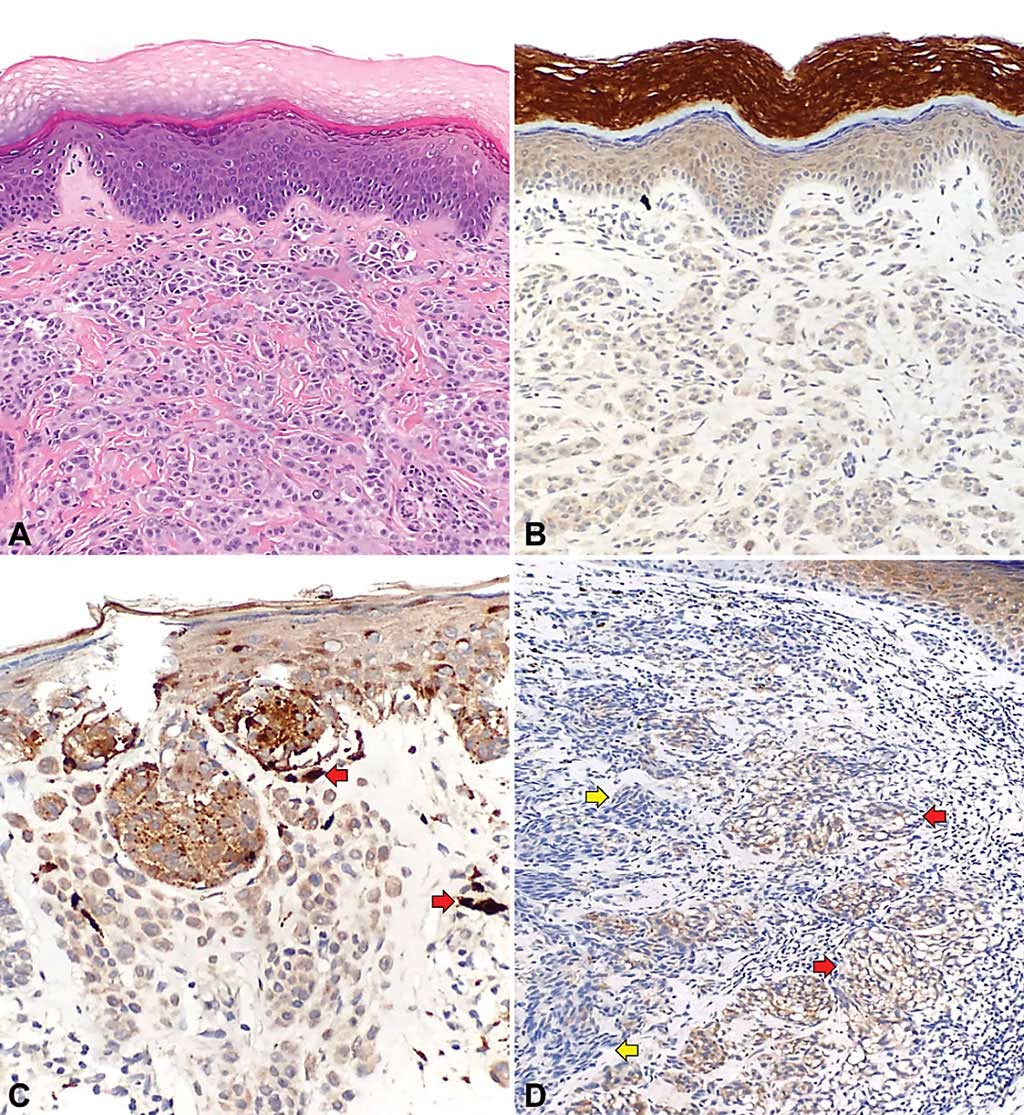Telomerase Reverse Transcriptase Protein Expression Evaluated for Melanomas
By LabMedica International staff writers
Posted on 19 Jul 2021
Telomeres are regions of repetitive nucleotide sequences located at the ends of chromosomes that play a key role in the maintenance of genomic integrity and stability in cells. In normal nonneoplastic somatic cells, telomeres progressively shorten with successive cell divisions.Posted on 19 Jul 2021
Molecularly distinct from cutaneous melanomas arising from sun-exposed sites, acral lentiginous melanomas (ALMs) typically lack ultraviolet-signature mutations, such as telomerase reverse transcriptase (TERT) promoter mutations. Instead, ALMs show a high degree of copy number alterations, often with multiple amplifications of TERT, which are associated with adverse prognosis.

Image: Telomerase reverse transcriptase (TERT) expression in non-lentiginous acral melanoma (NLAM) and non-acral cutaneous melanoma (NACM): (A) exhibiting 1+ TERT staining intensity and (B) The intensity of TERT expression and proportion of TERT-positive cells could also vary in cutaneous melanomas (Photo courtesy of MD Anderson Cancer Center)
Pathologists at the University of Texas MD Anderson Cancer Center (Houston, TX, USA) identified a total of 57 cases of acral and non-acral melanocytic lesions, including 24 primary ALMs, six metastatic ALMs, 10 primary non-lentiginous acral melanomas (NLAMs), 12 primary NACMs, and five acral nevi (AN), diagnosed at their institution between 2003 and 2016. Demographic, clinical, and histopathologic parameters and follow-up data for the selected cases were retrieved through review of the final pathology reports and clinical charts.
Immunohistochemical (IHC) analysis of TERT protein expression was performed on a 5-μm–thick paraffin section was cut from each tissue block of selected cases. The paraffin sections were then tested for TERT protein expression by IHC using an anti-TERT monoclonal rabbit anti-human antibody (Abcam, Cambridge, MA, USA) performed on a Leica Bond autostainer (Leica Biosystems, Buffalo Grove, IL, USA) per routine laboratory protocols. The pattern of TERT protein expression was recorded as negative, cytoplasmic, nuclear, or Golgi/perinuclear.
The investigators reported that TERT expression was more frequent in ALMs than in non-lentiginous acral melanomas and non-acral cutaneous melanomas, and was absent in acral nevi. When present, TERT expression in ALMs was cytoplasmic and more intense than TERT expression in other melanocytic lesions (with a higher H-score). There was a trend toward decreased overall survival in patients with ALMs with TERT immunoreactivity, but it did not reach statistical significance. Furthermore, no correlation was found between TERT expression and disease-specific survival in patients with ALMs.
The authors concluded that their study demonstrated that unlike TERT promoter mutations, TERT protein expression was frequently detected in both primary and metastatic ALMs. In addition, the study was the first to demonstrate differences in TERT immunohistochemical expression between ALMs and NLAMs, which have never been separately studied but rather have been grouped together (i.e., as “acral melanomas”) without histologic distinction. Lastly, in their study, although TERT expression was more frequent and of stronger intensity in ALMs than in other types of melanocytic lesions, with higher overall H-scores, TERT immunoreactivity in ALMs did not correlate with survival. The study was published in the July 2021 issue of the journal Archives of Pathology and Laboratory Medicine.
Related Links:
University of Texas MD Anderson Cancer Center
Abcam
Leica Biosystems











.jpg)

